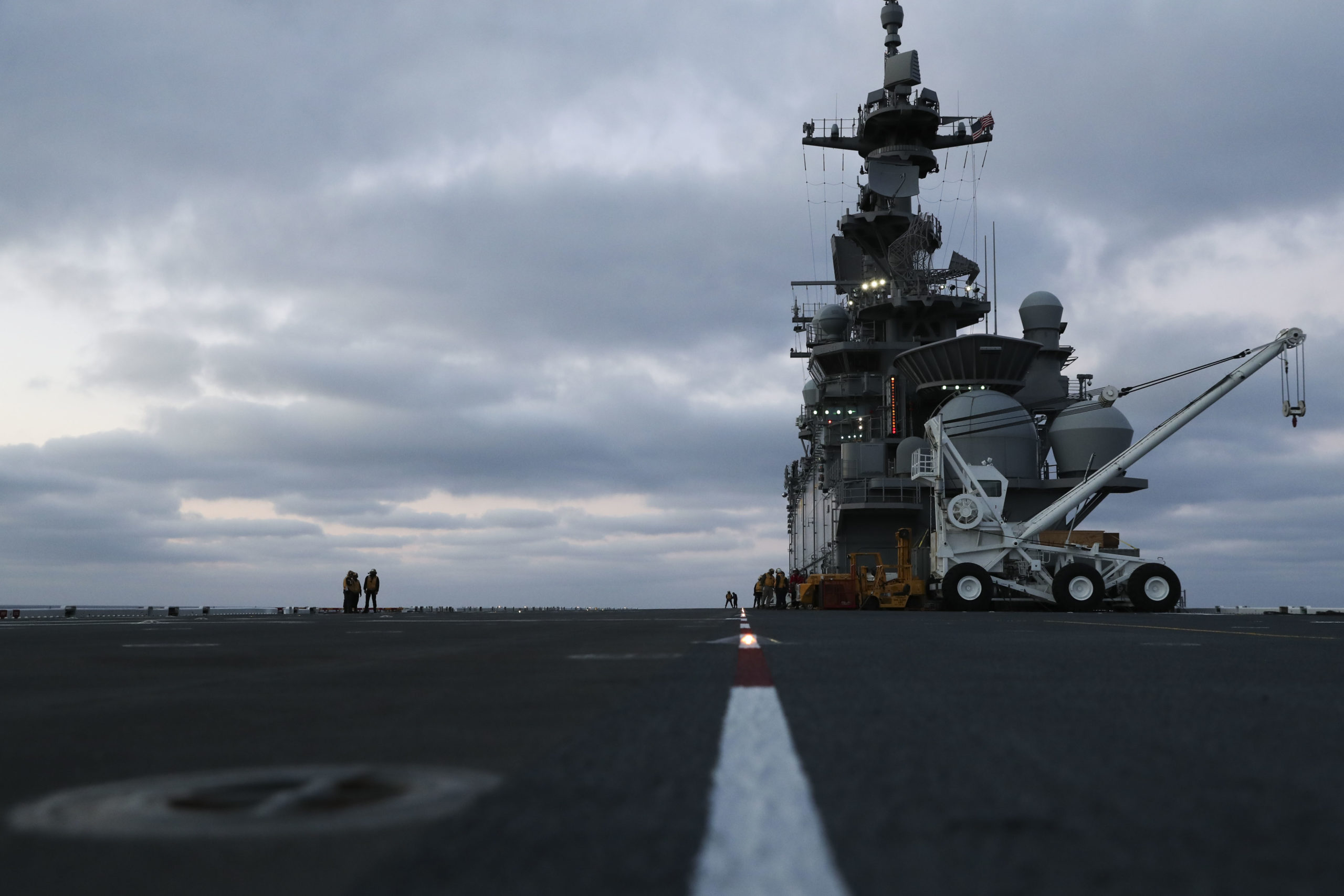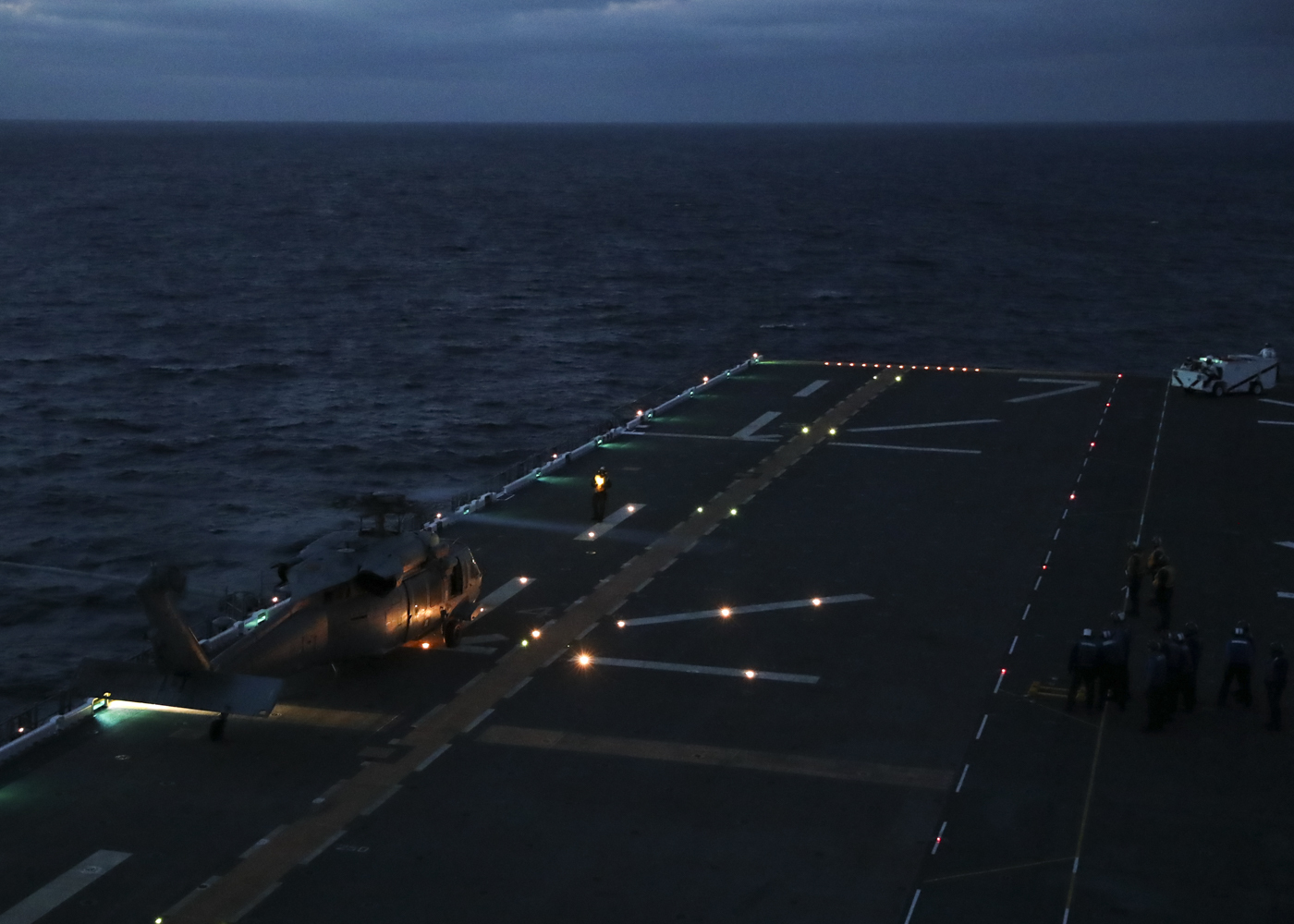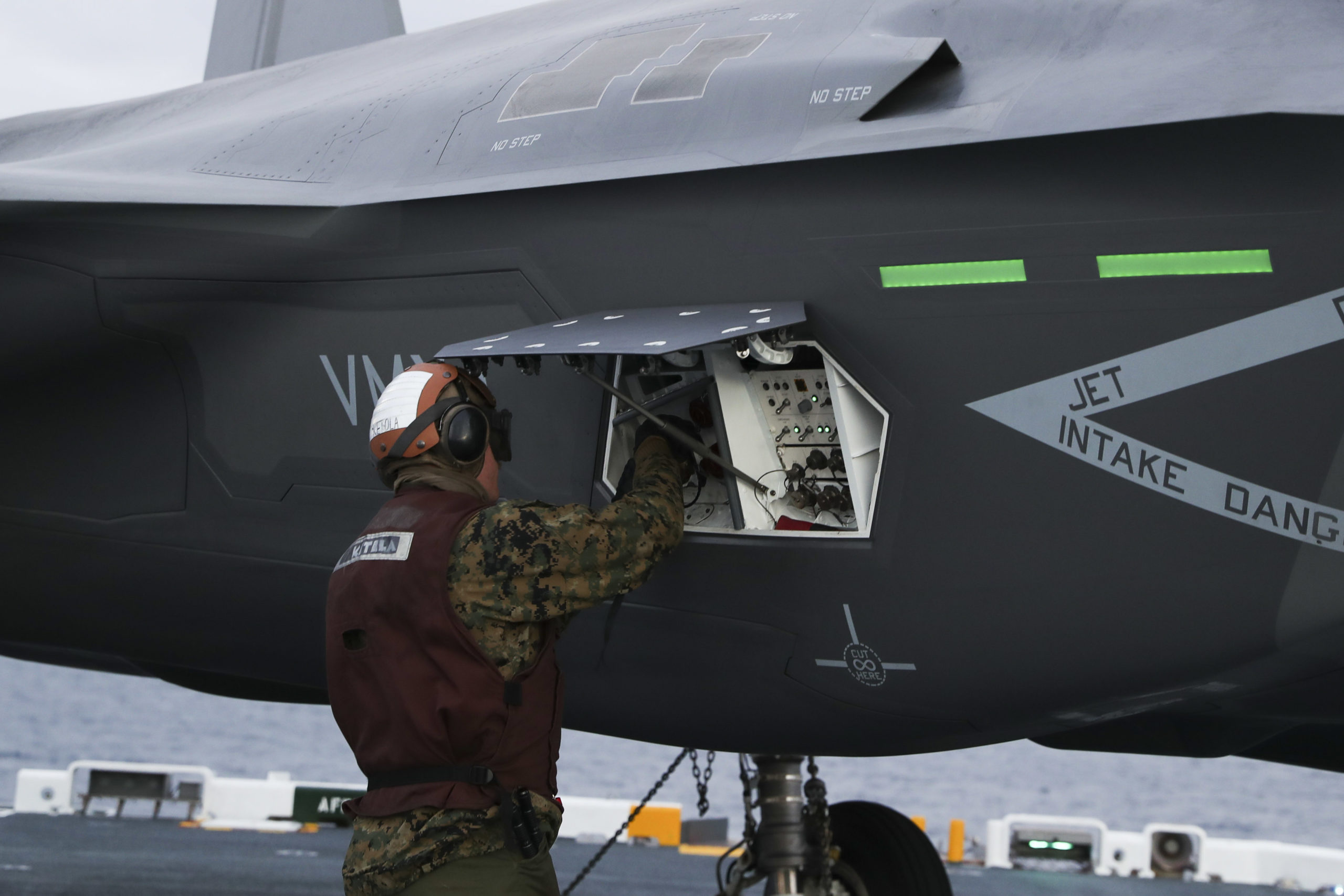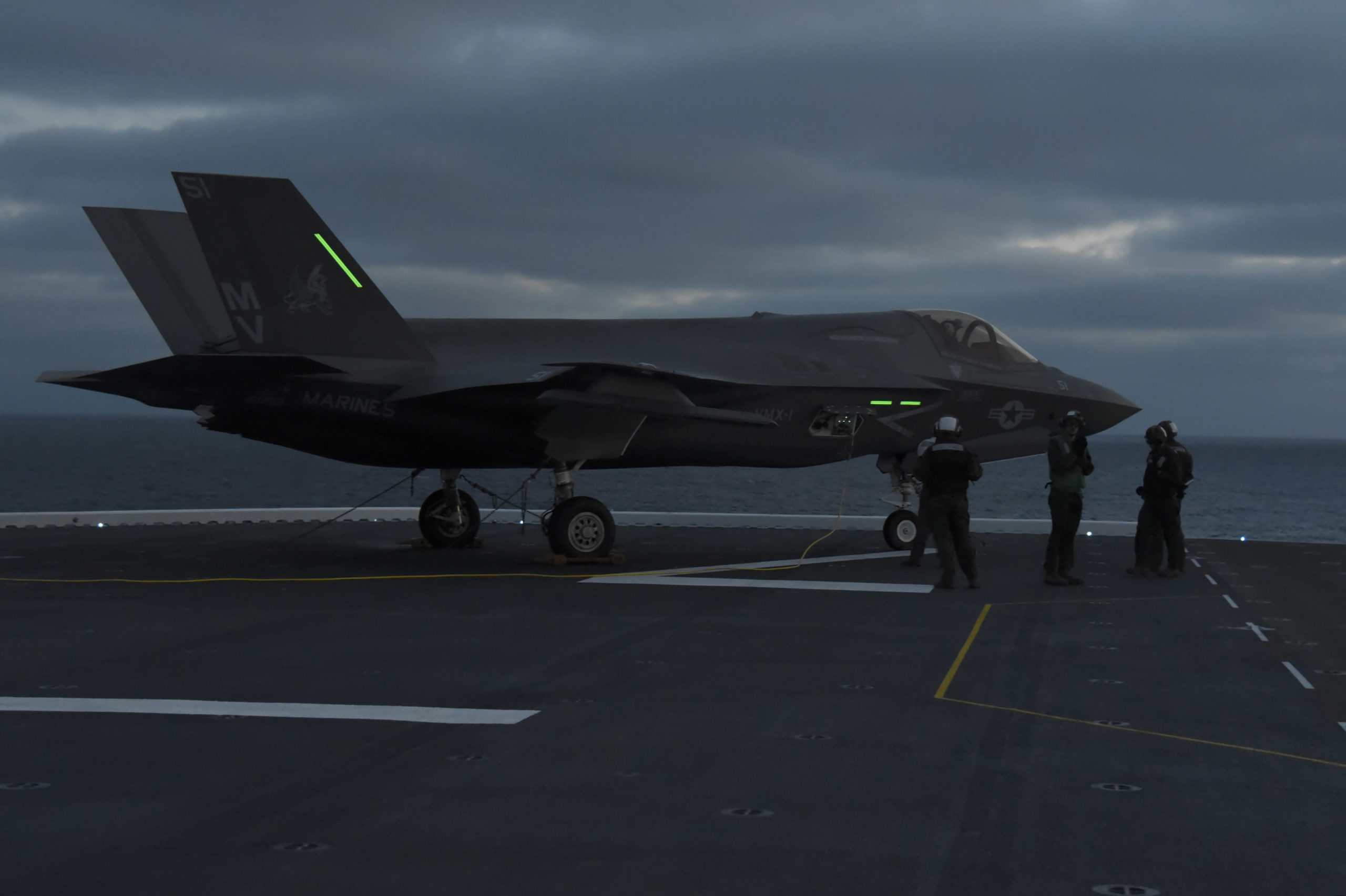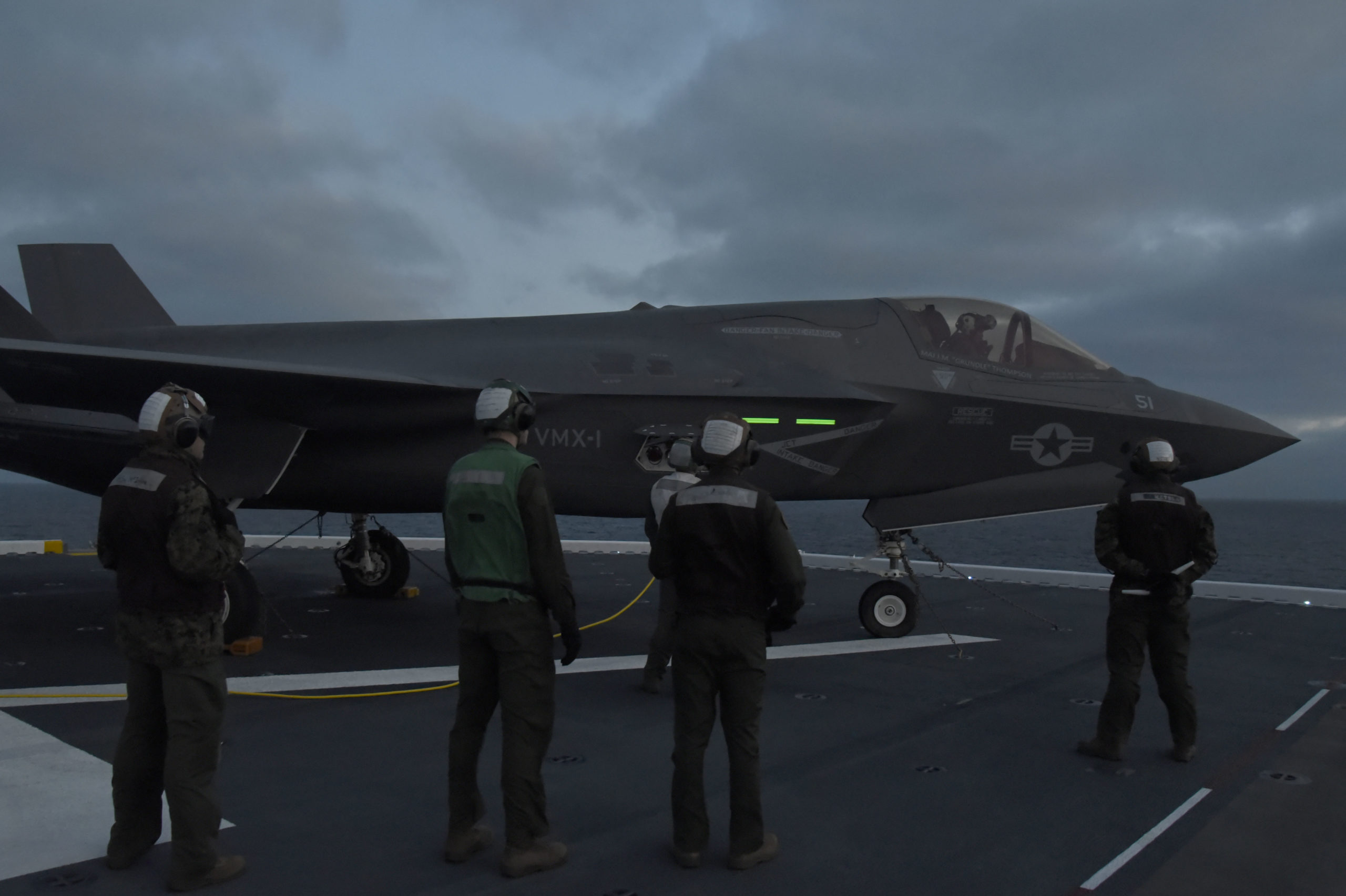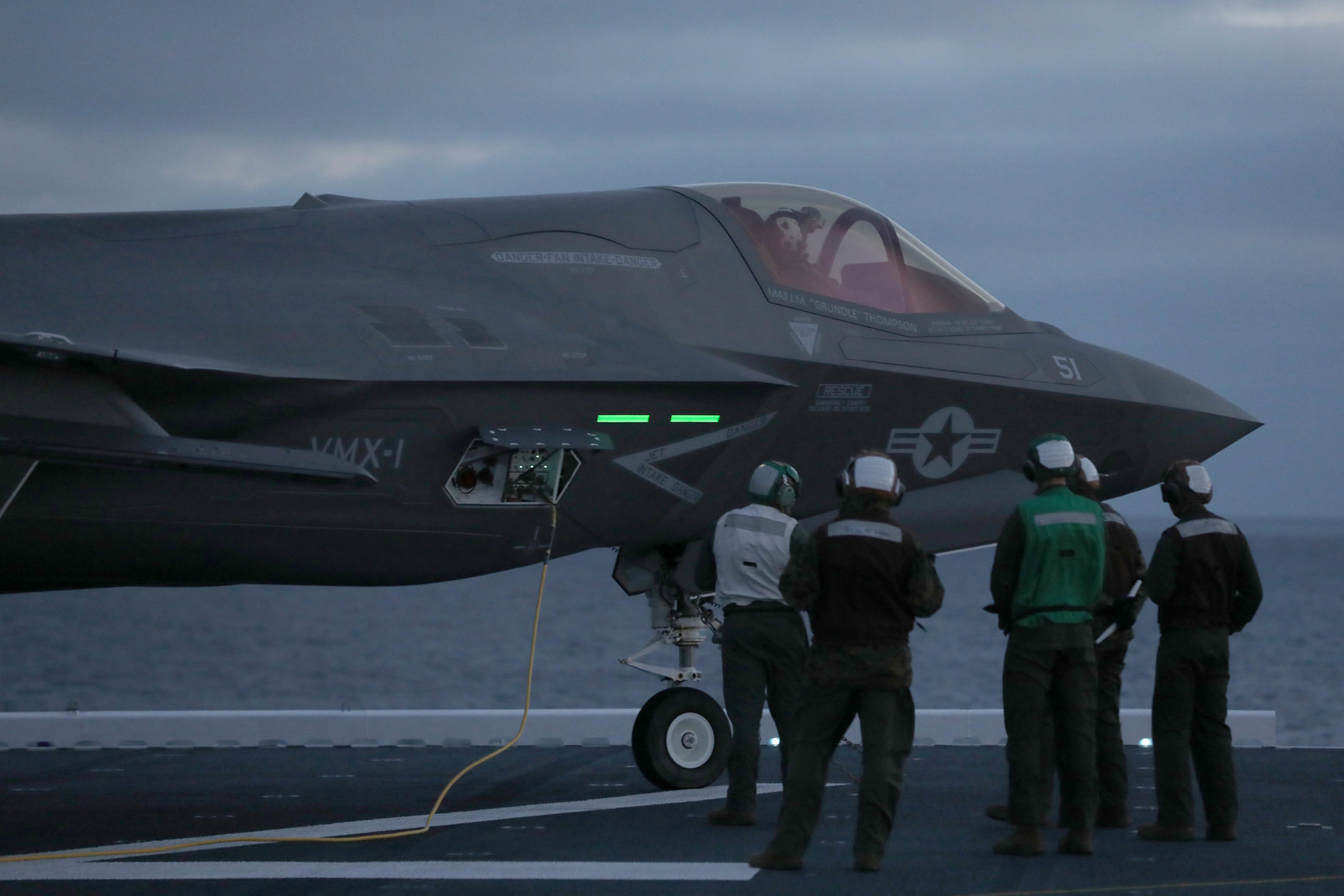By Robbin Laird
The evolution of the amphibious force and shaping amphibious task forces can contribute significantly to expanded capabilities for maneuver warfare at sea. By leveraging the new air capabilities, adding new defensive and offensive systems on the fleet, and expanding the C2 and ISR capabilities of the fleet, the contribution of the amphibious task force can be reimagined, redesigned, and thereby enhance the combat power of the U.S. Navy in maneuver warfare at sea.
In a way a shift is underway from the amphibious fleet operating an Amphibious Ready Group/Marine Expeditionary Unit to an amphibious task force whereby the reach and range of the Osprey-F3F-B-CH-53K combination, certainly built around the new class of LHAs can operate as modular task forces supplementing the classic carrier strike group to an expeditionary action group which can exercise sea control and sea-denial leveraging capabilities from the sea and to the sea integrated with the joint and coalition force. And building out the expeditionary seabasing enterprise can provide an additional way ahead for mobile basing as a strategic joint and coalition force capability,
As Jim Strock has highlighted, the U.S. Navy’s hull description system provides the following symbols to highlight the relevant ships in the build out of expeditionary seabasing.
Cluster 1
- SD: Dock Landing Ship
- LPD: Amphibious Transport Dock
- LHA: Amphibious Assault Ship (General Purpose)
- LHD: Amphibious Assault Ship (Multi-Purpose)
- LCC: Command Ship
Cluster 2
- ESD: Expeditionary Transfer Dock (formerly known as MLP:
- Mobile Landing Platform)
- ESB: Expeditionary Sea Base (one that correlates!!!)
- EPF: Expeditionary Fast Transport (formerly known as JHSV: Joint
- High-Speed Vessel)
Cluster 3
- T-AKE: Dry Cargo and Ammunition Ship
- T-AO: Fleet Replenishment Oiler
The classic ARG-MEU has been built around Cluster 1 ship classes sustained at sea by Cluster 3 ship classes. With the transformation of the ARG-MEU under the impact of the Osprey. the F-35B, and the CH-53K, the LHA has certainly been revolutionized and has become more aircraft carrier like, as seen in the concept of the Lightening carrier.
But the purpose has been different as than a large deck aircraft carrier – the focus is upon the extended reach of the ground troops as a projection force, with the ability to move back and forth from the sea to the land and back again. And the cluster 1 package has sustainability built into it which extends the duration as well as the reach with the new aircraft capabilities, which will only be further enhanced as the CH-53K comes into the force.
But with the U.S. Navy creating a new ship grouping called “Expeditionary Support and Seabasing Support” a new operational capability is being presaged, namely, the creation of modular task forces which can support both the joint force as well as the USMC operating from the sea. To unleash the capability of this new ship class requires not simply focusing on the hull form but how that hull forms fits into the broader evolution of the force, in terms of kill web integrability, and modularity.
The new class of ships can enable this transition but are empowered by it. Kill webs rely on networks, wave forms, connectivity, distributed C2, and platforms which can leverage all the former. Platforms are the time-space entities which enable the force; integrability allows a distributed force to deliver the desired combat effect. The kill web is about networks of sensors that can provide assessment data for shooters operating over an extended battle space.
The kill web provides enhanced resilience and more capability to respond deliberately as needed, not as forced to respond in terms of loss of capability. It also allows for target assessments being coupled with evolving risk assessments in terms of deterrence risks and consequences.
As the Navy rethinks how to use its aircraft carriers, how to use its amphibious forces and how to use the whole gamut of its surface and subsurface forces to fight as a fleet, an opportunity for change is clear: Why not rework how air assets move across the sea bases to provide the fleet with a wider variety of combat capabilities tailored to specific combat scenarios?
Notably, moving helicopters and tiltrotor assets across the fleet provides for a wider variety of options than simply having a set piece of equipment onboard each class of ship.
The mobility of the fleet is a baseline capability which the seabase brings to a more agile combat force. Ships provide for presence, but mobility at sea, with variable degrees of speed and stealth. But added to this are a range of other mobility capabilities which can work effectively with the fleet to expand its reach, range, and lethality. This is certainly part of the wider kill web approach.
The featured photos highlight two U.S large deck carriers and two amphibious ships operating together along with their escorts and 26 F-35 Lightning II Joint Strike Fighters drilled with a Japanese large deck warship earlier this year in the Philippine Sea.
The exercises held earlier this year were the largest drills involving aviation-capable ships since the October exercise with the U.S Navy’s Ronald Reagan and Carl Vinson carrier strike groups, the Royal Navy’s Carrier Strike Group 21 (CSG21) and the Japan Maritime Self Defense Force (JMSDF) Escort Flotilla 2.
01.19.2022
Photo by Petty Officer 1st Class Peter Burghart
USS Tripoli (LHA 7)
For more on the emergence of the maritime kill web force, see the following:


